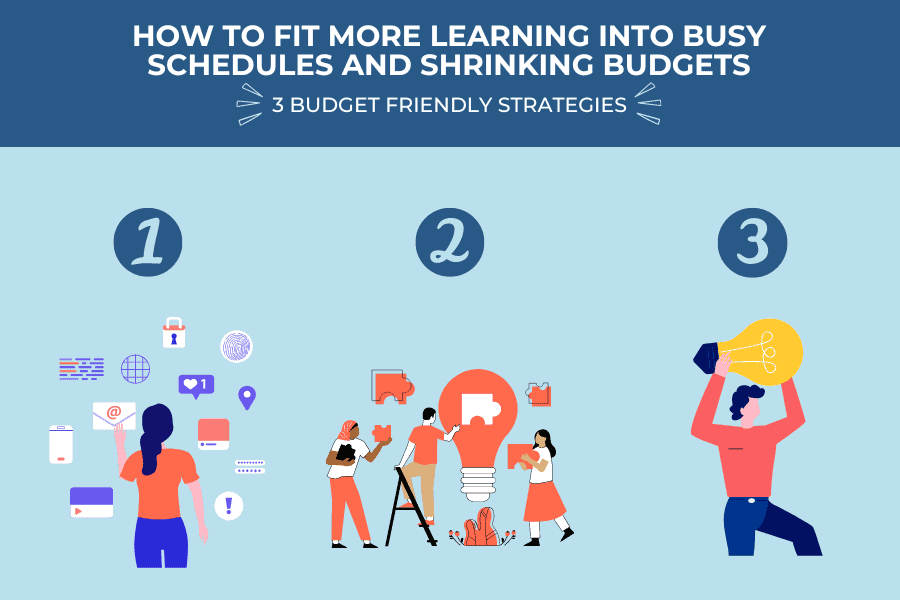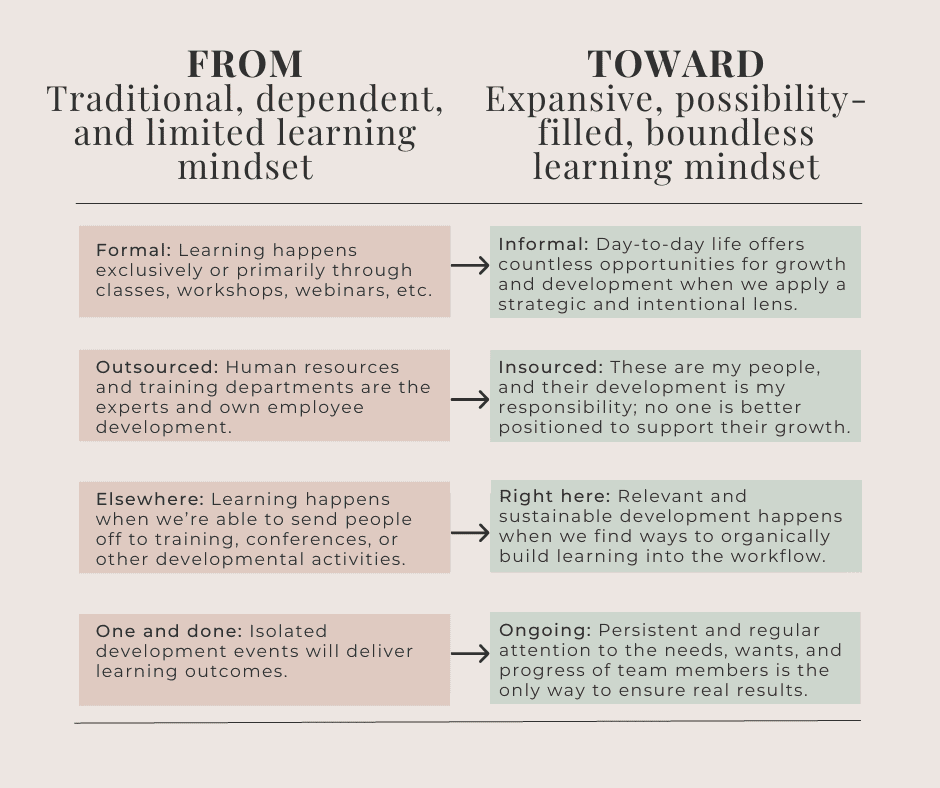
While conducting interviews in preparation for an upcoming keynote presentation, I asked my standard: If you could ask your leader for just one change that would enhance your engagement and effectiveness, what would it be? One employee, Toby, quickly responded, “just kill me”, which seemed to be a dark answer to what’s normally an uplifting question. Buying time to gather my thoughts, I reiterated what I’d heard, and he quickly corrected my understanding, “not just kill me – just skill me”. After a good laugh, he went on to share how his role was changing and he didn’t have the data analytics or coding capacity that was needed – nor the communication competencies required to get ahead in the organization. He was deeply concerned about his future in the absence of skilling up.
Employees everywhere share Toby’s concern. (This infographic quantifies the range of concerns.) People are keenly aware of the massive shifts in business and society. And after the past few years of instability and dramatic flux, we have a visceral understanding that success today as well as sustainable success and relevance tomorrow depend upon ongoing learning and skills development.
Leaders and managers are generally aware of this too. They appreciate the role that learning plays in terms of effectiveness, engagement, and retention – yet frequently report being unable to deliver as much as employees want and need. When I ask why, the answer is invariable ‘time’ and/or ‘budget’.
No one will argue that both are in short supply in most organizations. But we can no longer allow these limitations to compromise the learning that’s non-negotiable for organizations and individuals. We must find ways to offer the skills development people need – within these constraints that clearly aren’t going anywhere anytime soon.
The first step involves moving beyond our old, deeply entrenched ‘limited learning’ mindsets toward a way of thinking that’s more expansive, possibility-filled, and unbounded by traditional developmental structures.

Leaders and managers who want to make development happen despite current limitations can execute this more expansive and contemporary mindset through these three time- and budget-friendly strategies.
Engineer meaningful and embedded development experiences.
Day-to-day work is the new classroom, and it can offer tremendous learning opportunities. Effective leaders work with their teams to identify skill gaps and desires; then they look around to identify organic, in-the-workflow, experiences and activities that offer the opportunity for those skills to be developed. Does Cal want to enhance his collaboration skills? Maybe there’s a cross-functional team that would benefit from his knowledge while concurrently offering him an opportunity to observe and exercise new skills. Does Lucy aspire to a leadership role? Maybe she could begin to shadow your onboarding efforts and ultimately take this over for the department. When real work that needs to get done anyway meets a development need, this offers powerful experiences to learn and grow – that don’t cost anything and might in some cases actually save money.
Encourage engagement with others.
Humans learn powerfully with and through others. Effective leaders use this to their advantage as they find ways to encourage learning with and among team members. Allowing subject matter experts to showcase their knowledge by taking on training roles. Strategic and intentional job shadowing. Reciprocal mentoring. These are all ways to build greater connection and a culture of learning within your team that are easy on the budget and once established require little time investment on the part of leaders.
Extract extra value from each learning opportunity.
A leader’s active follow-up is one of the most overlooked ways to get more from any learning investment or activity. A leader’s attention to an employee’s development can exponentially expand its value. You can squeeze more value from informal learning by:
- Following up on the experience with simple questions like ‘how’s it going?’ or ‘what have you learned?’ Simply allowing the employee to pause and reflect offers the opportunity for them to integrate their insights and make new connections. It also sends a powerful message that you care, are on top of it, and are a partner in their growth.
- Reinforce what’s being learned through your feedback and coaching. Watch for examples of people trying out the skills and abilities they are developing. Take the time to share your observations, specific feedback, and coaching.
- Recognize those who are investing in their development. Positive attention is one of the best ways to encourage behavior. So, praise those who are committed to growing their skills liberally. Do it individually to let the person know you see and appreciate the effort and results. And do it in group settings to send a signal to everyone about how important learning is to you; over time, this will build a learning culture throughout your team.
- Encourage application early and often. New skills will atrophy if not used. So, if someone has invested in building a new capacity, make sure to find ways for them to use it in a meaningful way. This will reinforce the skill as well as their commitment to learning because it’s so obviously relevant.
Time and budget constraints are a part of today’s (and likely tomorrow’s) business landscape. But there’s no reason to allow either to constrain the learning that’s vital to individual and organizational success. An expansive, possibility-filled learning mindset will allow you to take advantage of the boundless resources – creativity, engagement, enthusiasm – and deliver on your employee’s request to “just skill me.”
Get more strategies for offering the development and learning your people need by downloading this infographic: Winning the Uphill Upskilling Battle.
This post originally appeared on SmartBrief.
